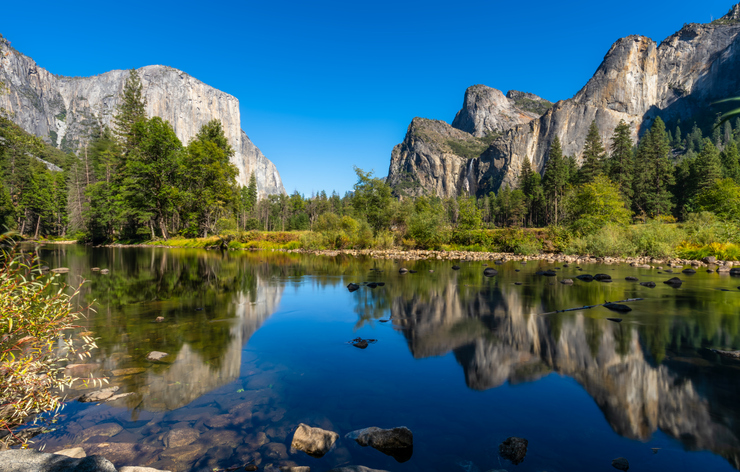
Known for its spectacular waterfalls, gigantic granite monoliths, and breathtaking views, Yosemite National Park is the most popular national park in America. Located in eastern central California, it occupies 761,000 acres and offers everything the other parks do not. Aside from well-known outdoor activities like hiking, camping, and bird watching, the park also mounts music and art festivals. More than four million people visit Yosemite National Park each year.
If you’re thinking about taking a trip to the world-famous park, check out our detailed guide below:
Weather
Yosemite experiences hot, cold, and wet weather throughout the year. Spring and summer, in particular, boast of bright and sunny days. While both seasons are perfect for outdoor activities like hiking, be prepared for hot and dry weather.
If you visit in autumn, you’ll experience milder conditions. Winter in Yosemite is snowy, particularly in higher elevations.
Sightseeing
Nothing compares to the breathtaking sites that the park has to offer. Yosemite Falls, which is the highest waterfall in North America, rises to more than 2,425 feet. It takes from three to four hours to hike to the top, but you’ll be rewarded with scenic views of the impressive waterfalls after.
You can’t miss out on the Half Dome as well. This popular rock formation is 4,737 feet high above the valley floor and has a 300-person cap on the number of hikers allowed per day.
Considered as one of the most impossible rock formations to climb, El Capitan is an iconic wall that’s more than 3,000 feet high.
Other notable spots in Yosemite are Glacier Point, Yosemite Valley, Tunnel View, Bridalveil Fall, and Tuolumne Meadows.
Camping spots
Yosemite is home to around 13 campgrounds:
- Upper Pines
- Lower Pines
- North Pines
- Camp 4
- Wawona
- Bridalveil Creek
- Hodgdon Meadow
- Crane Flat
- Tamarack Flat
- White Wolf
- Yosemite Creek
- Porcupine Flat
- Tuolumne Meadows
Each campground is open at different times; some are open all year while some are only available for specific months. Some campgrounds like Upper Pines, Wawona, Hodgdon Meadow, and Crane Flat also require a reservation in advance. For more information about Yosemite’s campgrounds, check out the National Park Service page here.
Best time to go to Yosemite
Yosemite is usually packed in the summer, especially on weekends, as well as on holidays. If you want to avoid the crowd, visit Yosemite during May and September.
Planning to fish in Yosemite? Fall is the best time to go since it’s peak season for trout fishing. Those planning to go skiing and snowboarding should visit the national park from mid-December to mid-March.
What to bring
Preparation is key when going to Yosemite. In order to make your trip to Yosemite a memorable one, it’s important to plan ahead and consider all the items that you might need. Here are some of the essentials:
- Water bottles
- Snacks
- Rain jacket
- Sturdy shoes
- Blister pack
- Bug spray
- Sunscreen
- Lip gloss
- Picnic cloth
- Trash bags
- Earplugs (if you’re going camping)
- Binoculars
Entrance fees
Those entering the Yosemite National Park via private car, van, pickup truck, or RV are required to pay $35 per vehicle. Visitors entering through motorcycle must pay an entry fee of $30. If you’re entering the park on foot, bicycle, or horse, be prepared to pay $20 per person.
An annual Yosemite pass (valid for 12 months) can also be purchased for $70.
Discover Merced County and Chowchilla real estate by getting in touch with Soldavi Realty today. Call 209.975.7653 or send an email to info(at)soldavi(dotted)com.
